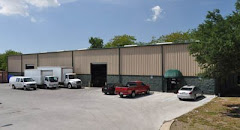
Probably the most significant fact about the process of plastic recycling is that one plastic product may end up being recycled into something completely different. One process is commonly referred to as "downcycling". This is when a material is recycled into something of lesser quality and/or reduced functionality.
Plastic bottles, the trade term is PET (polyethylene terephthalate), are crushed, chopped into flakes, and pressed into bales for resale. One very common and popular use for PET is the fabric industry. PET is spun into yarn and thread and woven into new polyester cloth. Uses are normally durable, strong products such as jackets, coat, shoes, bags, hats, and accessories. It is not usually used with anything that touches the skin because of irritation. But many new processes and innovations are pushing this growing industry. More and more companies are taking advantage of the growing demand for "green products", and are trying to incorporate these new fabrics into their product.
High-density polyethylene (HDPE) is used for telecom ducts, thicker bottles such as for laundry detergent, plastic lumber, chairs, and many other durable products. PVC has been more difficult to recycle, but recent technologies have been developed in the last decade that involve something called "up-cycling". This is when a product is recycled into something of more value than the original.
What makes plastic recycling difficult is that recycled material has to be sorted according to the plastic identification code, or PIC. Once that is done, there are other obstacles such as the dyes, fillers and additives that are used in plastics.
Sources:
Wikipedia: Plastic Recycling
Recycling Point.com


